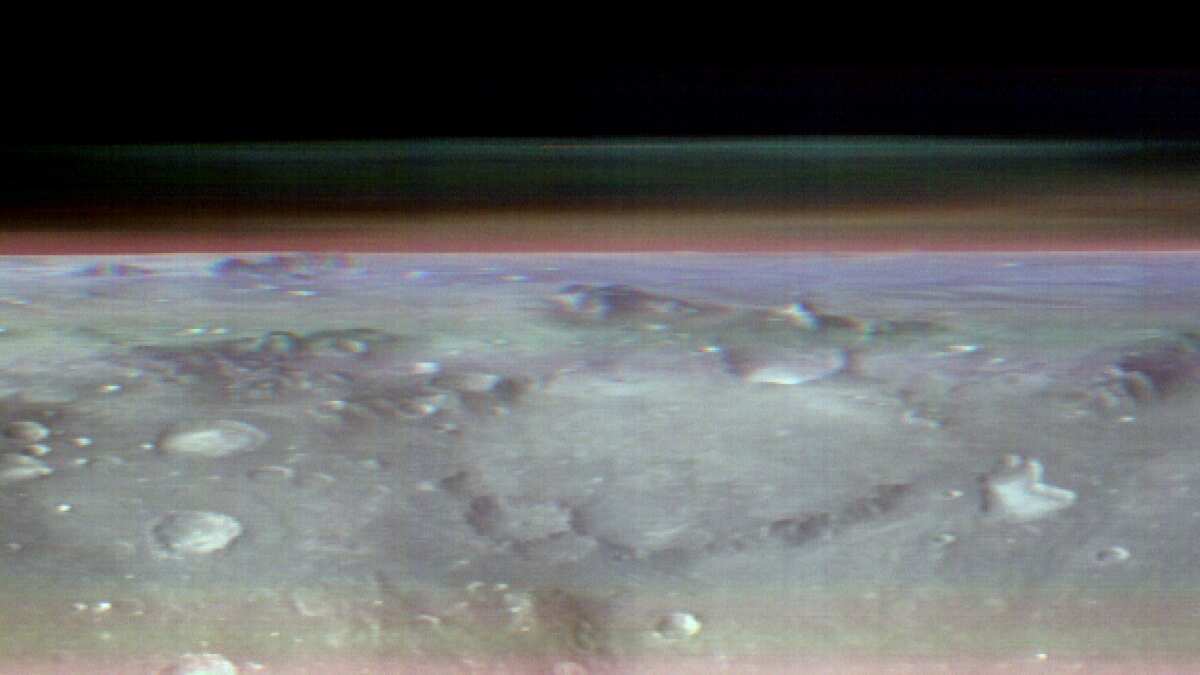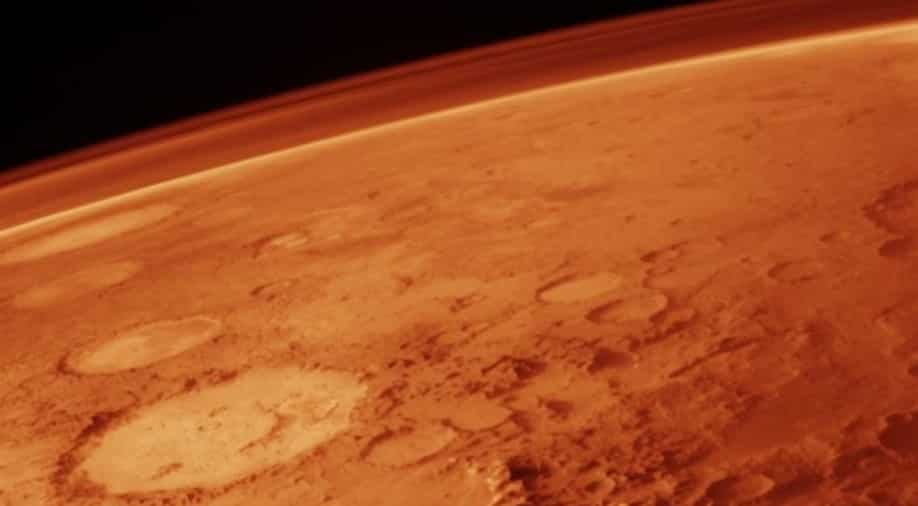NASA's Odyssey orbiter acts as Space Station to Mars to capture its atmosphere from top
Story highlights
The spacecraft took images in May from an altitude of about 250 miles (400 km). Notably, this is the same altitude at which the International Space Station flies above Earth.
NASA's 2001 Mars Odyssey orbiter, in its 22nd year on the Red Planet, recently captured spectacular clouds and dust on Martian skies, along with one of its two moons.
The view is akin to the one you see when one sees the curvature of the Earth below the International Space Station.
What does it mean?
trending now
The stunning view of Mars will help scientists all over the world gain new insights into the Martian atmosphere. It shows the Martian surface below the layers of cloud and dust.
Mars from top: From where the images were captured?
The spacecraft took images in May from an altitude of about 250 miles (400 km). Notably, this is the same altitude at which the International Space Station flies above Earth.
This unusual view of the horizon of Mars was captured by NASA’s Odyssey orbiter using its THEMIS camera | Credit: NASA/JPL-Caltech/ASU
"If there were astronauts in orbit over Mars, this is the perspective they would have," said Jonathon Hill of Arizona State University, according to an official NASA readout. Hill is the operations lead for Odyssey’s camera, called the Thermal Emission Imaging System, or THEMIS. "No Mars spacecraft has ever had this kind of view before."
Why is this Martian view unique?
This is because the mission had to capture a more expansive view of the atmosphere. The capture of the Martian landscape was aimed to help scientists improve upon the existing models of the Martian atmosphere.
"I think of it as viewing a cross-section, a slice through the atmosphere,” said Jeffrey Plaut, Odyssey’s project scientist at JPL. "There’s a lot of detail you can’t see from above, which is how THEMIS normally makes these measurements."
Besides, the THEMIS cannot make angular movements. Therefore, to adjust the angle of the camera, the whole spacecraft had to be readjusted. Here, the team rotated the orbiter about 90 degrees while ensuring that Sunlight fell on the spacecraft's solar panels.
Also watch | Scientists surprised by source of largest quake detected on Mars
The Odyssey mission hopes to take similar images in the future, capturing the Martian atmosphere across multiple seasons.
(With inputs from agencies)
















